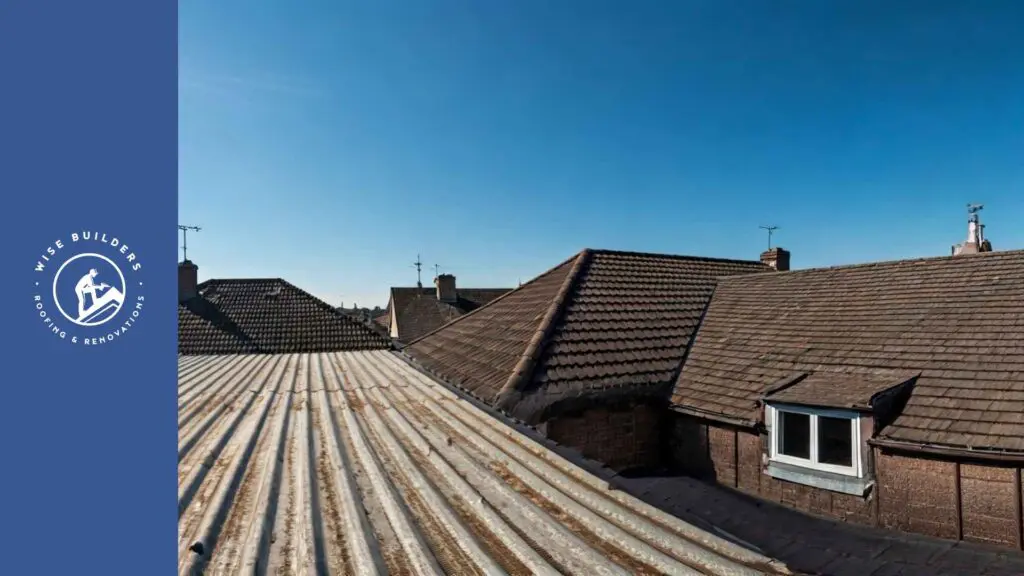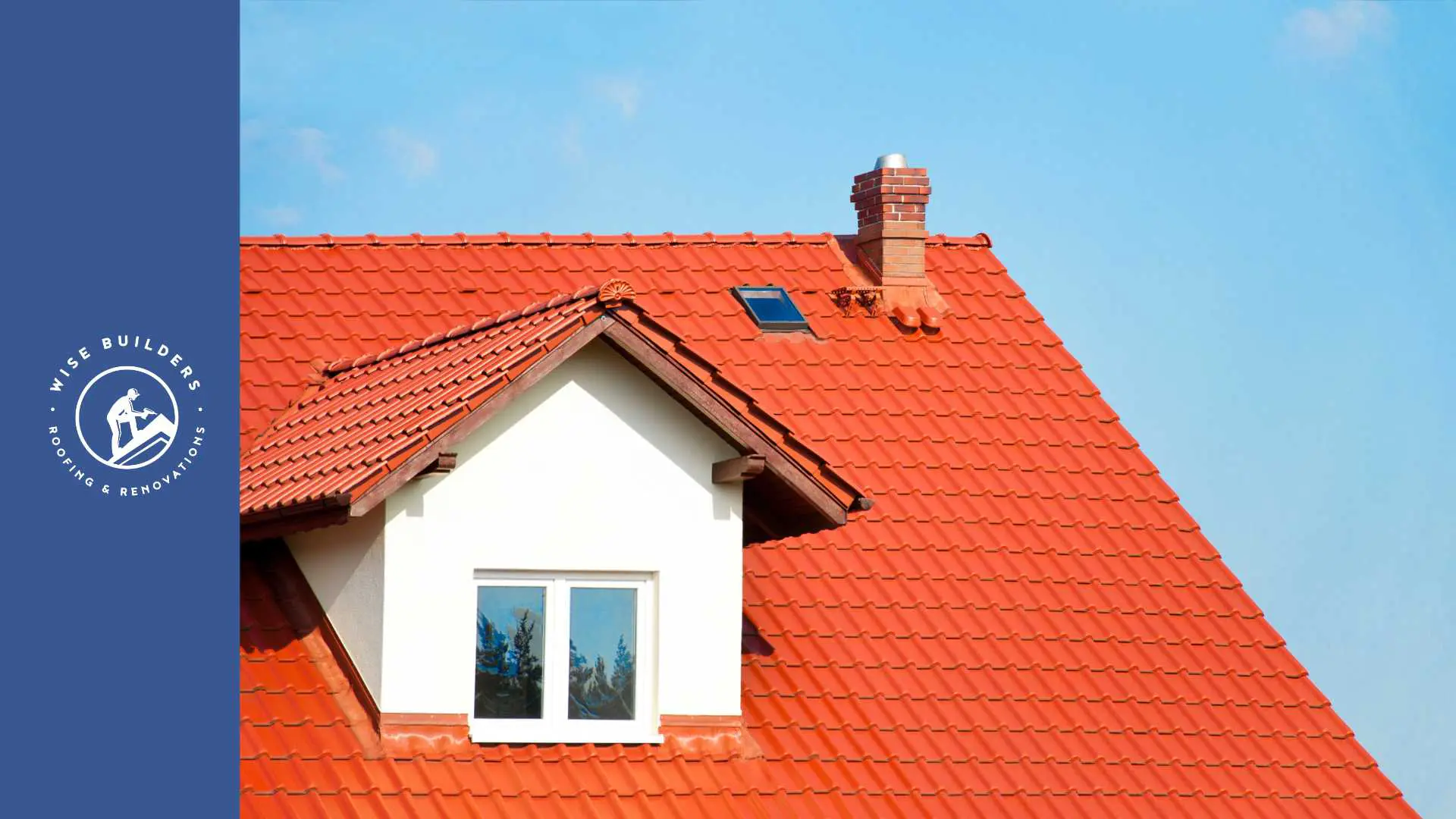
Key Highlights
- Like any part of a home, roofs age, and understanding the distinction between normal wear and tear and significant damage is crucial for homeowners.
- Factors like weather conditions, installation quality, and regular maintenance significantly influence the lifespan of a roof.
- Visible signs of an aging roof include fading colors, granule loss, dark spots on shingles, and even the presence of algae growth.
- Extreme weather conditions such as hailstorms, heavy rain, and constant UV exposure can accelerate the aging process, leading to issues like leaks and structural damage.
- Regular roof inspections, preferably by a professional roofing company, are essential to identify potential problems early on and ensure timely repairs.
Introduction
A roof is a home’s first line of defense against the elements, and like any structural component, it requires regular maintenance and eventual replacement. While roof repair or replacement is a significant investment, understanding the natural wear and tear process can help homeowners anticipate issues and make informed decisions about their roofs. From visible signs of aging to factors that accelerate deterioration, this guide will equip you with the knowledge to ensure your roof stays in good condition for as long as possible.
Defining Normal Wear and Tear on Residential Roofs

As roofs age, they naturally exhibit wear and tear due to constant exposure to weather elements and the passage of time. This degradation is a gradual process, and understanding the difference between normal aging and significant damage is crucial for homeowners.
Normal wear and tear typically manifest as aesthetic changes, such as fading colors on asphalt shingles, gradual granule loss, or minor curling at the edges. While these signs might not immediately compromise the roof’s functionality, they indicate that the roof is aging and will eventually require attention.
What Constitutes Normal Aging vs. Roof Damage?
Differentiating between normal wear and roof damage is vital for homeowners to address problems promptly and prevent further deterioration. While normal wear is a gradual process, roof damage typically occurs due to sudden events or neglected maintenance.
Signs of aging, such as faded shingles or minor granule loss, are usually cosmetic and don’t necessarily require immediate intervention. However, roof damage often requires prompt attention to prevent further issues. For instance, missing shingles, cracked flashing, or signs of water damage, like water stains on ceilings, are clear indicators of roof damage that require immediate repair.
Understanding this distinction helps homeowners prioritize repairs and make informed decisions about their roofs, ensuring their home remains protected from the elements.
Identifying Typical Signs of Aging in Roofing Materials
One of the most apparent signs of an aging roof is granule loss in asphalt shingles. These granules, resembling coarse sand, protect the shingles from UV rays and weather elements. Over time, it’s normal to see some granules in gutters or downspouts. However, excessive granule loss can expose the underlying asphalt, making it susceptible to leaks and further damage.
Another common sign of aging is the curling or cupping of shingles. This occurs when the asphalt loses its flexibility due to prolonged exposure to the sun, causing the edges to lift or curl upwards. Curling shingles are more susceptible to wind damage and can trap water, potentially leading to leaks.
If you notice missing shingles, especially after a storm, it indicates potential roof damage. While a few missing shingles might seem like a minor issue, they can expose the underlayment to water damage, leading to leaks and mold growth if not addressed promptly.
Common Causes of Wear and Tear on Roofs
Apart from the natural aging process, several factors contribute to roof wear and tear. Understanding these factors can help homeowners take preventative measures and prolong the life of their roofs.
One of the primary contributors is weather conditions. Constant exposure to sunlight, rain, wind, and snow takes a toll on roofing materials, especially asphalt shingles, leading to fading, granule loss, and eventual deterioration.
Environmental Factors Impacting Roof Longevity
The environment plays a significant role in the lifespan of a roof. Constant exposure to sunlight, particularly UV exposure, is a major contributor to the breakdown of roofing materials, especially asphalt shingles. The UV rays can cause the shingles to dry out, become brittle, and lose their protective granules.
Furthermore, fluctuating weather conditions, such as extreme temperature swings, heavy rain, hail, and strong winds, can accelerate wear and tear. These conditions can cause shingles to crack, curl, or even blow off, exposing the underlying layers to water damage and other potential problems. Homeowners in areas with harsh weather conditions need to pay closer attention to their roofs and consider more durable roofing materials.
In addition to weather, factors like air pollution and nearby trees can also impact roof longevity. Air pollution can deposit harmful particles on the roof, leading to discoloration and premature aging. Trees, while aesthetically pleasing, can drop leaves, twigs, and branches onto the roof, causing debris buildup, moisture retention, and potential damage from falling limbs.
The Effect of Seasonal Changes on Roofing Materials
Each season brings unique challenges for your roof. Understanding how these changes affect your roof can help you prepare and prevent damage.
| Season | Effect on Roof |
|---|---|
| Summer | Constant UV exposure causes fading and drying of shingles, while high winds can lift or tear off shingles. |
| Fall | Falling leaves and debris can clog gutters, trapping moisture and promoting algae growth. |
| Winter | Heavy snow and ice can cause ice dams, leading to leaks and water damage. Freeze-thaw cycles can also damage shingles and flashing. |
| Spring | Heavy rain and high winds can cause leaks if the roof is not properly maintained. Spring is a good time to inspect your roof for any damage from winter. |
Regular roof inspections, especially after severe weather events, are crucial to identify and address any damage promptly. If you notice signs of hail damage, such as dents in shingles or granules in your gutters, contact your insurance company and a professional roofer to assess the damage and determine the best course of action.
Early Detection and Maintenance Strategies

Early detection of roof issues is crucial for preventing costly repairs. By identifying potential problems early on, homeowners can address them before they escalate into major damage. Regularly inspecting your roof and knowing what signs to look for can save you money and extend the life of your roof.
Apart from regular inspections, simple maintenance tasks like keeping gutters clean and trimming overhanging branches can significantly impact your roof’s longevity. These practices prevent water damage and reduce the risk of debris accumulating on your roof.
Routine Inspection Tips for Homeowners
While it is always advisable to have a professional inspection done by a reputable roofing company, homeowners can also conduct routine checks to ensure their roof’s health. Start by visually inspecting your roof from the ground, looking for any signs of missing, cracked, or curled shingles. Pay attention to areas around vents, chimneys, and skylights, as these are common leak-prone spots.
Next, check your gutters and downspouts for excessive granule buildup, which indicates shingle deterioration. Also, inspect your attic for any signs of water damage, such as water stains, mold growth, or daylight peeking through the roof boards.
Remember, safety should be your top priority during roof inspections. If you’re uncomfortable climbing on your roof, it’s best to hire a professional roofing contractor. They have the necessary equipment and expertise to conduct a thorough inspection and identify any potential issues.
Preventative Measures to Extend Roof Life
Extending the life of your roof goes beyond just addressing issues as they arise. It involves proactive maintenance to ensure it remains in good condition for years to come. One of the most crucial aspects is regular cleaning. Removing debris like leaves and twigs prevents moisture buildup and algae growth, which can deteriorate roofing materials.
Proper ventilation is another key factor in prolonging your roof’s lifespan. Adequate attic ventilation regulates temperature and moisture levels, preventing mold growth and reducing the strain on your roof. Ensure vents are clear of any obstructions and consider installing additional vents if necessary.
Lastly, don’t underestimate the importance of timely repairs. Addressing minor issues like a few missing shingles or cracked flashing promptly can prevent them from escalating into significant damage requiring costly repairs or even a complete roof replacement.
Conclusion
Regular inspections and proactive maintenance are key to preserving the longevity of your roof. Understanding the differences between normal wear and tear and potential damage can save you from costly repairs down the line. By being attentive to environmental impacts and seasonal changes, you can better protect your roof from premature aging. Remember, early detection through routine inspections is crucial. Stay ahead of any issues by implementing preventative measures and addressing minor wear promptly. Taking care of your roof now ensures a safer and more durable shelter for years to come.
At Wise Builders, We ensure our clients receive the best possible outcomes. Our commitment to quality workmanship and customer satisfaction is unwavering, making us the top choice for residential Roofing services in our community.
Frequently Asked Questions
How often should a roof be inspected to manage wear and tear?
Regular inspections, at least twice a year, are recommended to manage wear and tear and ensure roof longevity. A professional roofer can identify potential problems like minor wear before they become significant damage requiring costly repairs or insurance claims.
Can minor roof wear lead to significant damage if ignored?
Yes, even minor wear, if ignored, can escalate into significant damage. What might start as a few missing granules can lead to water leaks, mold growth, and eventually, the need for costly repairs. Addressing potential damage early is key to effective roof repair and maintenance.







